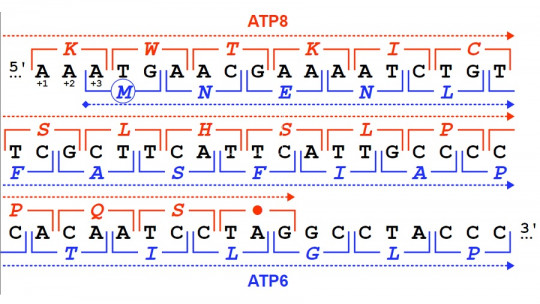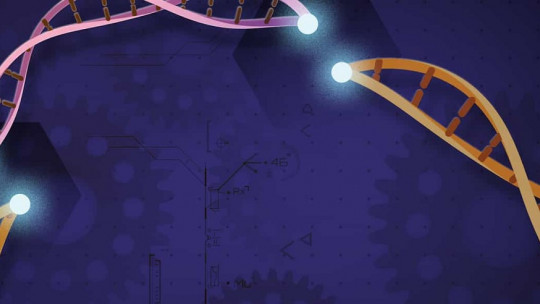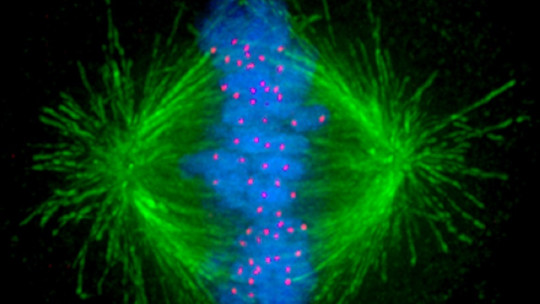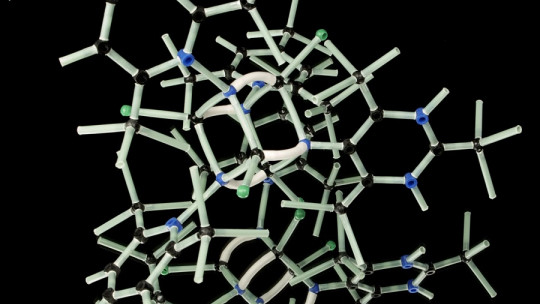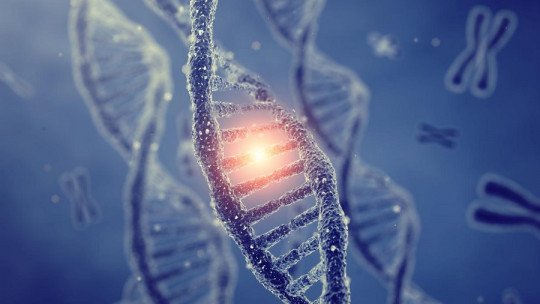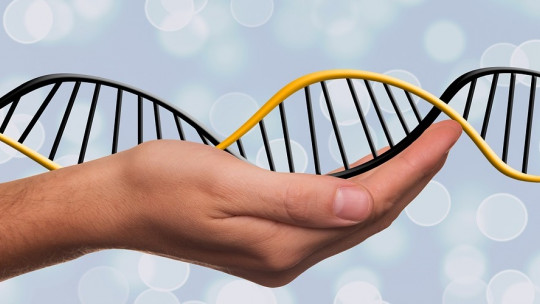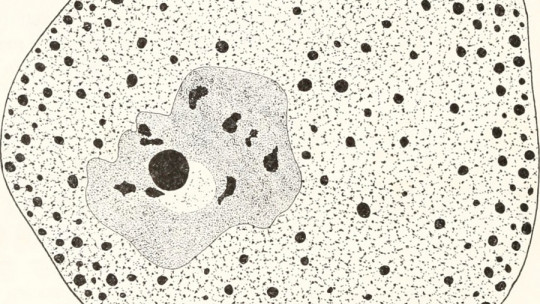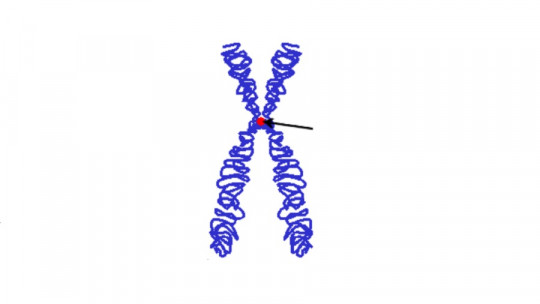
Nucleic acids are the polymers of life. DNA is the library in which all the instructions for protein synthesis at the cellular level are stored and, therefore, the bases of cellular metabolism. RNA is responsible for transcribing this information stored in the nucleus and transporting it to the ribosomes, where protein materials are assembled. Due to their functionalities, these biomolecules are essential for life.
In any case, the work of DNA does not end with the death of the cell. Half of the genetic information that makes us who we are is transferred to our offspring, while the other half comes from the remaining parent. Inheritance patterns, genetic recombination and mutations give rise to life and, therefore, evolution itself.
Based on all these premises, today we focus our attention on the structures that condense most of the genetic information of human beings (and other living beings): chromosomes. More specifically, We will delve extensively into the centromeres which, as their name indicates, correspond to the central part of this formation.
The characteristics of chromosomes
Before starting to talk about centromeres, we find it necessary to lay down a few simple bases on chromosomes. We begin by saying, for example, that All of our body cells are typically diploid, that is, with nuclei that have two sets of chromosomes If each set of human chromosomes consists of 23 units, a typical somatic (body) cell will have a total of 46. Half of them come from the mother and the other half from the father.
Diploidy is an extremely beneficial condition at an evolutionary level, since, if the father’s chromosome fails in a specific region, the mother’s analogous area can try to mask the deficiency. Clearly this is not so simple, since there are phenomena such as dominance and recessivity, but diploidy is associated with genetic variability, with few exceptions.
On the other hand, The cells that give rise to gametes must reproduce by meiosis, that is, instead of giving rise to 2 identical cells from a parental one (mitosis), 4 cells are created with half the genetic information Thus, when the egg (n) and sperm (n) unite to give rise to a zygote, it will recover the diploidy that we require to live.
These are some of the explanations necessary to understand the functioning of chromosomes, but we left many more data in the pipeline that we have already explored on other occasions.
The chromosome structure
If you have ever seen a photographed chromosome (always under a microscope, since for example human chromosome 1 has a length of 0.001 centimeters), you will quickly associate its shape with the letter quickly than Each chromosome is made up of 4 arms and a center (the centromere)
Furthermore, it should be noted that, if a longitudinal cut is made in the chromosome, 2 sister chromatids are obtained that form the entire structure. These are composed of the chromoneme and chromomeres, structured based on DNA and proteins.
What is the centromere?
In the lines just exposed, we have just introduced for the first time the term that concerns us here: centromere. This is the region of the chromosome that separates a short arm (p) from a long arm (q), that is, each of the 2 segments that form the sister chromatid
Furthermore, centromeres are responsible for the attachment of chromosomes to the fibers of the mitotic spindle, essential during mitosis so that the genetic information of the cell can be separated at both poles of the parental cell, for the subsequent division and creation of 2 identical daughter cells. Actually, the work per se is carried out by the kinetochore, but it is located above the centromere, so both structures can be included in a common function.
At a molecular level, it can be highlighted that the centromere of human chromosomes has a total of one million “base pairs”, that is, 1,000,000 nucleotides with their corresponding nitrogenous bases (A,G,C,T). Most of these base pairs are found in the form of α heterochromatin, which is an inactive, condensed form of the genetic material.
Furthermore, it is interesting to know that centromeric DNA is highly repetitive, as it is composed of a series of short repeated non-coding sequences, that is, they are not transcribed and translated into proteins as other parts of the genome do. This type of DNA with repeated information is known as satellite DNA, and it is the main nucleic compound that we find in centromeres.
The types of chromosomes according to the centromere
Beyond its properties, The physical location of the centromere provides an excellent classification criterion to give names and surnames to the chromosomes We will tell you in the following lines, briefly, these types.
1. Metacentric chromosome
They have the centromere practically in the exact middle of their structure that is, in the center of the
2. Submetacentric chromosome
On this occasion, the centromere is somewhat more displaced from the theoretical center of the figure It is not completely located at either end, but clearly there are large and small arms here.
3. Acrocentric chromosome
The centromere is far from the theoretical center. Thus, the arms are enormously unequal to each other (2 are very short and 2 are very long).
4. Telocentric chromosome
The centromere is so close to one of the ends that, practically, only 2 long arms and no short ones are perceived So that we understand each other, it is almost as if a chromosome was cut in half horizontally.
The enigma of the centromere
Determining the nature of the centromere in animals is an extraordinarily difficult task, since the highly repeated DNA that composes it is practically impossible to analyze in a laboratory. On the other hand, coding and essential genes for life are easy to “map”, so specific nucleotide sequences and base pairs (AAAGCTTTAAAG, for example) that code for proteins are obtained. The human genome project is based on that: sequencing our genes and knowing which base junction (nucleotides) gives rise to which protein.
Unfortunately, centromeres are a dead end. The current methodology does not allow sequencing the DNA of these structures, neither of human beings nor of any other animal, so we are faced with a true black hole of a million base pairs that is unreachable today. In any case, some researchers downplay its importance: centromeres are highly variable between species, so they do not believe that their functionality is key at the composition level to understanding life.
On the other hand, genes are universal and unambiguous If the triplet of bases AGC codes for a specific amino acid, it will do the same in a human being, in a fly or in a whale. Therefore, it is consistent to “subtract” some importance from the centromeric dilemma since, generally, the essential evolutionary mechanisms are conserved between taxa. In any case, not everything is so simple: the DNA of the centromere evolves at a very rapid rate, but it still retains its functionality of cell structure and division. How is it possible?
Summary
Unfortunately, we cannot give you an answer to this question and many others that could be raised through the study of the centromere. Geneticists consider this structure a “genetic black hole,” since we know that it is made up of a million pairs of repeated bases (satellite DNA), but little else. Its structure and viability remains unknown today, and the impossibility of mapping this non-coding DNA makes things very difficult.
In any case, we do know that centromeres give shape to the chromosome, are essential for cell division and offer a very useful classification system in certain areas. Luckily, discovering all its enigmas and secrets will only be a matter of time (and scientific advances).

